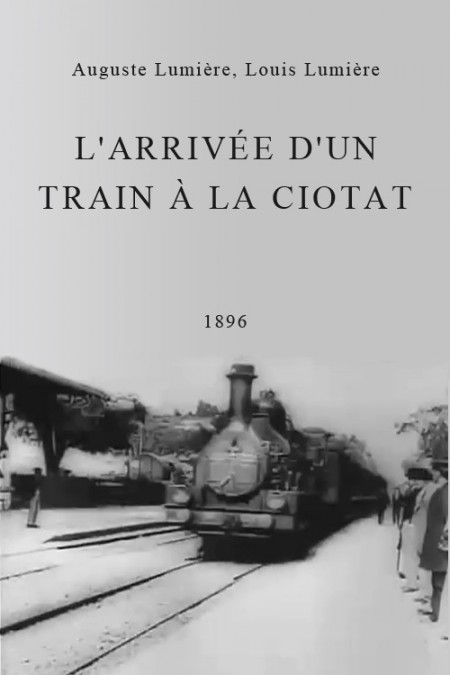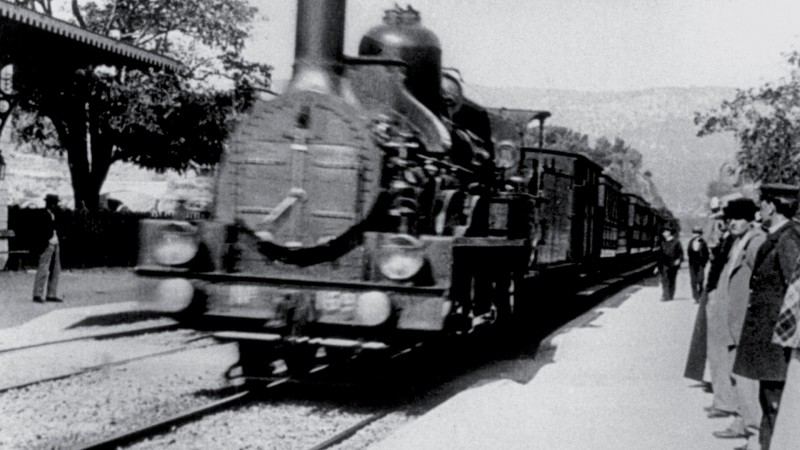The Arrival of a Train

La Ciotat train station, France, 1896. A rail, taken from an effective diagonal perspective; On the front platform, some people (among which there’s Jeanne, sister of Louis and Auguste Lumiere), are waiting for the arrival of the train.
Suddenly appears a locomotive, coming from the bottom of the picture at high speed; it clashes on the left side of the screen, and then disappears out of field. The train slows down, wagons now visible. They steadily slow down until stop. The central part of the screen, empty and static until then, starts filling of travelers coming down, while assistants help other passengers in getting the train.
The legend has it that, when the film was projected for the first time, the audience fled away from the room in terror, because they was convinced that the train could have been go out off the screen investing them. Later was determined that it was more like a promotional story widespread by Lumiere brothers to advertise effectiveness and realism of their new invention, encouraging the audience to attend the show.
It’s not so important whether the story was true or not, but it’s important that people believed it was possible. It was becoming clear, even if they was just images projected on a screen, that thanks to the power of the invention, prospect of shots, involvement of the audience, people started to believe that these moving pictures could be much more than a simple illusion.
Even if we’re talking of a simple documentaristic scene, watching more carefully, you can realize how the location of the camera generates a powerful depth impact, and how actors behaviors that fit the stage space are not random, but in fact, well researched and with the precise purpose to to amaze and astonish viewers.
